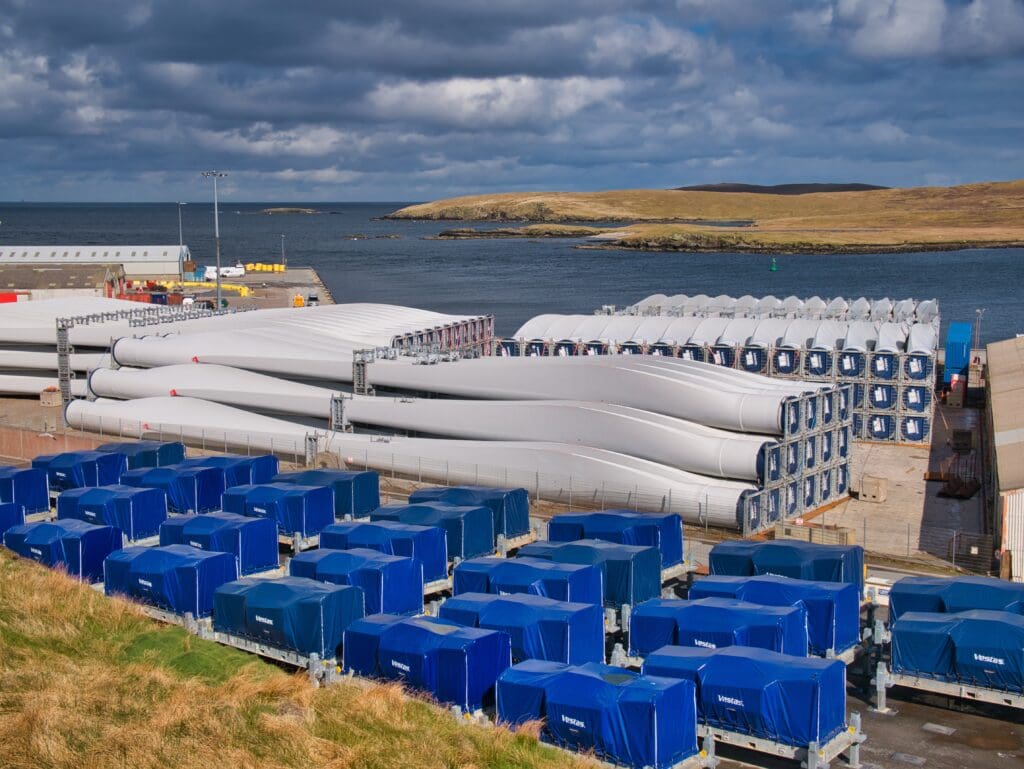Shetland windfarm powers nearly 500,000 homes as renewables boom sparks debate

Power is flowing from the Shetland Isles to mainland Britain for the first time, thanks to the UK’s most productive onshore windfarm, Viking, which has come on stream.
The 103-turbine project, developed by SSE, can generate up to 443 megawatts (MW) of electricity—enough to power nearly 500,000 homes. With Shetland being the windiest part of the UK, it’s expected that the turbines will rarely stand still.
Alistair Phillips-Davies, Chief Executive of SSE, emphasised the critical need for a rapid expansion of renewable energy infrastructure to meet the UK’s climate targets. “We need to do a lot more of these projects, a lot more offshore wind projects as well, to make sure that we can decarbonise the energy system,” he told BBC News, as he outlined SSE’s ambitious plans to invest £20 billion in renewables by the end of the decade.
However, not everyone is convinced. Critics argue that the expansion of windfarms and the necessary pylons to transmit electricity will industrialise vast areas of the British countryside for private profit. Viking’s electricity is transmitted via a £1 billion, 160-mile undersea cable to Noss Head on the Scottish mainland, and plans for further pylons are stirring opposition across Scotland and beyond.
Phillips-Davies described the renewable push as “the biggest construction that we’ve seen since the Second World War,” adding that Shetland’s exceptional wind resource makes it an ideal location for future large-scale wind projects. But while the Viking windfarm is a milestone for the UK’s green energy ambitions, it has sparked discontent among local communities.
Energy Secretary Ed Miliband praised Viking as “a crucial part” of the UK’s strategy to reduce reliance on volatile fossil fuel markets and boost energy independence. The Labour government aims for all UK electricity to come from renewable sources by 2030, backed by a £8.3 billion investment in Great British Energy, a publicly-owned power company. But the Conservatives have criticised the initiative as a “financial black hole” that would subsidise wealthy energy firms.
Despite government pledges, residents of Shetland are frustrated. Moraig Lyall, chair of the environment and transport committee of Shetland Islands Council, pointed out that households in Shetland often face energy bills more than double the UK average of £1,700 per year. “People look out their windows now, they see all these turbines that are generating lots and lots of energy, but they’re not seeing the benefit here,” Lyall said, highlighting concerns over the impact on the landscape and peat bogs, as well as tourism.
On the mainland, opposition is also growing. Kate Matthews of Save Our Mearns, a campaign group in Aberdeenshire, warned of the long-term impact of new pylons required to connect renewable projects to the grid. “Angus and Aberdeenshire are looking at 10 to 20 years of industrialisation,” Matthews said. “We’ll be paying the price for generations. It will be unrecognisable.”
SSE’s Phillips-Davies argues that streamlined planning processes are crucial for accelerating the transition to renewable energy. Highlighting the lengthy development timeline of Viking, which took 20 years from conception to completion, he called on both UK and Scottish governments to reform planning laws to enable decisions within 12 months. He cited delays like the Berwick Bank offshore windfarm, awaiting approval for nearly two years, as examples of bottlenecks that must be addressed.
But while the renewables sector pushes for faster growth, the oil and gas industry is voicing its concerns. In Aberdeen, the heart of the UK’s oil and gas industry, there are fears that the rapid shift to green energy could put jobs at risk. David Whitehouse, CEO of Offshore Energies UK, warned that the removal of tax breaks and high tax rates on producers, including a 78% windfall tax, could trigger a “shutdown of investment” with severe consequences for the supply chain and employment.
Steve Bowyer, North Sea general manager of EnQuest, echoed these concerns, urging the government to provide a stable fiscal environment to support ongoing investment. “We actually want to grow in the UK but we need the right fiscal conditions to drive that growth,” Bowyer said, stressing the need for collaboration and engagement with industry.
The UK government insists it will protect North Sea jobs while ensuring a smooth transition to renewables, but balancing the competing pressures from the oil industry and the green energy sector remains a significant challenge. As the nation races towards a greener future, the road ahead is marked by both opportunity and opposition.





